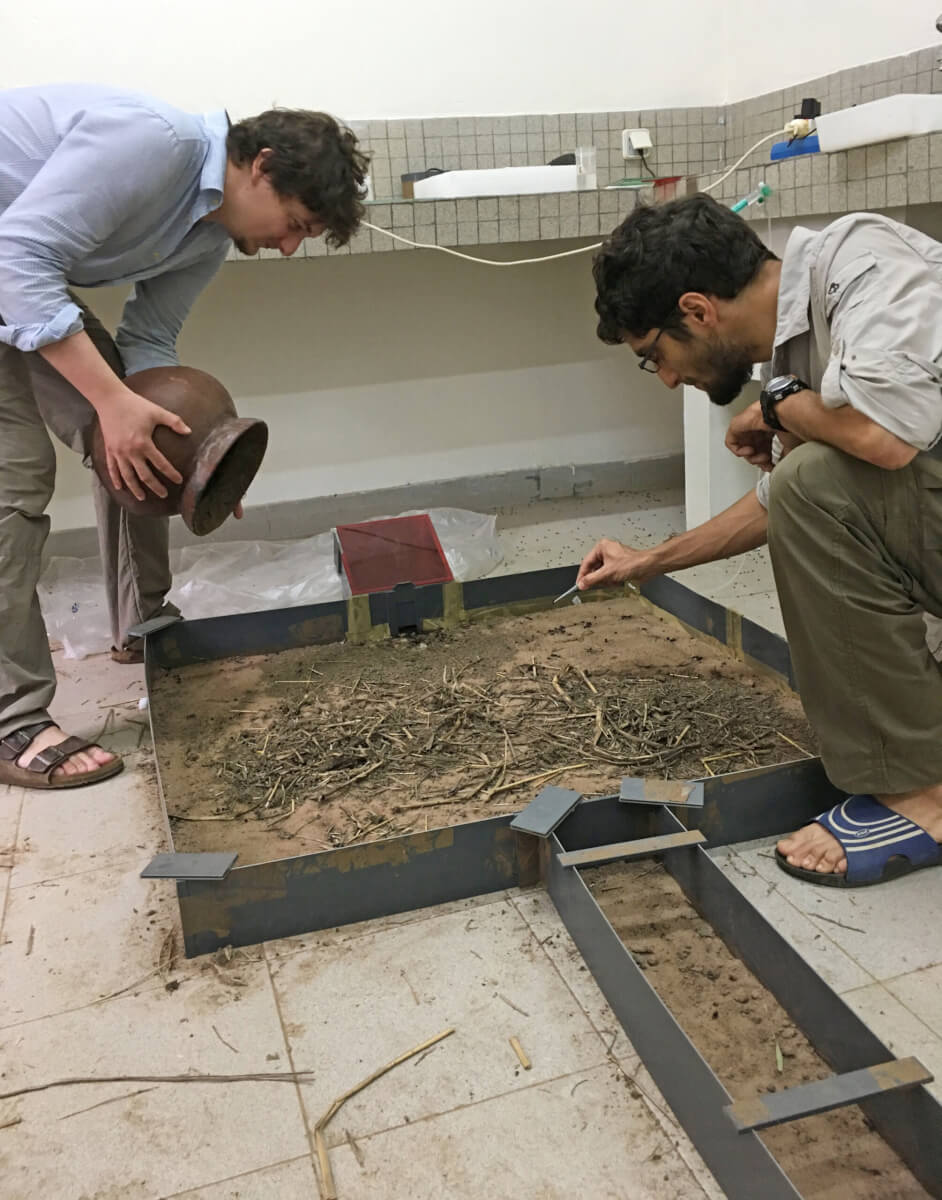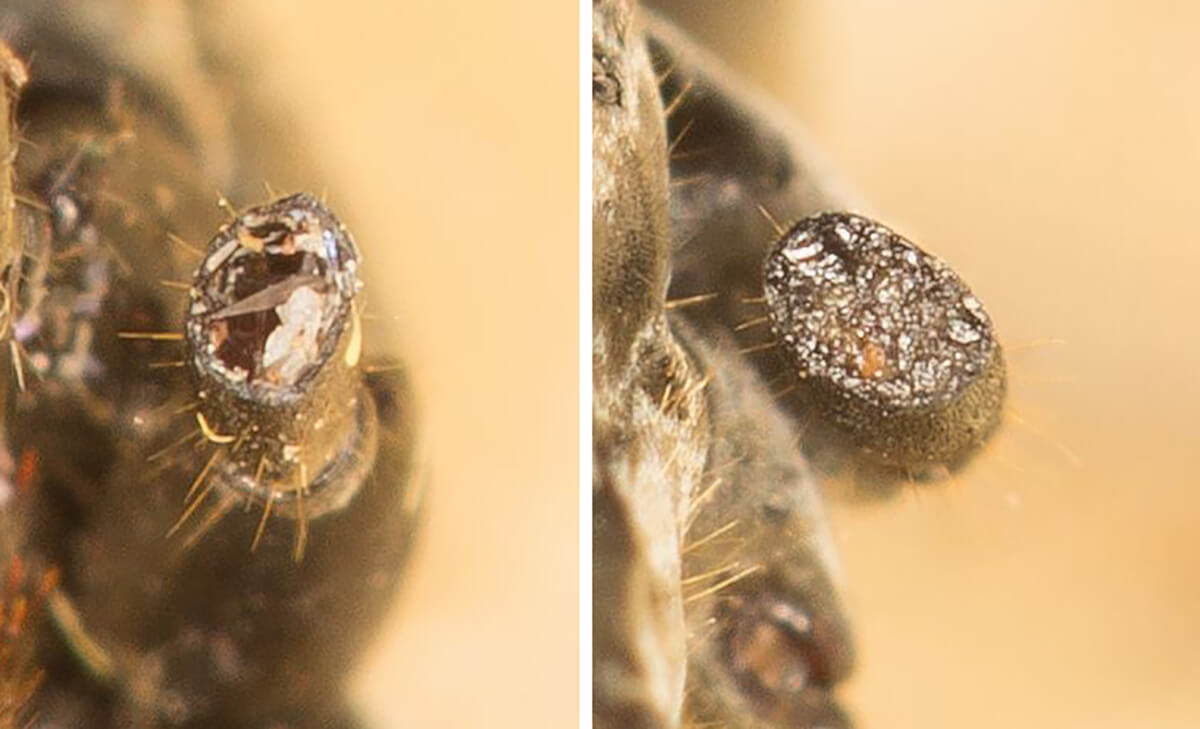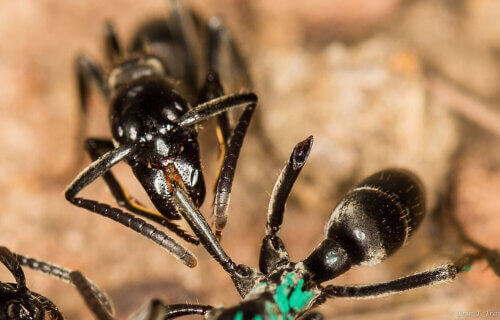WÜRZBURG, Germany — In the dangerous business of hunting ferocious termites, workers of the African ant species Megaponera analis frequently sustain grievous battle wounds. Now new research reveals their nestmates mount sophisticated rescue missions for injured ants, using self-made antibiotic secretions to treat infected wounds. This targeted first aid saves up to 90% of nestmates who otherwise perish from festering infections.
The findings showcase how even an ant brain can sense subtle chemical cues revealing injury and infection status, triggering care customized to a comrade’s needs. While social immunity behaviors seen in ants range from nuisance nest cleaning to outright execution of contaminated colony members, treatments here prove precisely tuned to circumstances. This extraordinary targeted care with the unique ant-based antibiotic applied to infected individuals massively boosts their chances of survival.
“With the exception of humans, I know of no other living creature that can carry out such sophisticated medical wound treatments,” says Erik Frank, currently a postdoctoral researcher at the University of Würzburg, in a statement.
What Makes This Species So Unique?
M. analis is an ant species that relies entirely on raiding notoriously pugnacious termite species for food. The ants swarm termite nests in relentless waves, securing a meal but sustaining massive casualties from termite soldier defenses in the process. Prior research shows that up to 21% of raiding ants return home sporting severed limbs or other grievous injuries.
Nestmates who did not receive wound care perished at extreme rates, with 90% dying within a day. Now the secret behind their survival is revealed – those fortunate enough to make it home receive customized treatments from comrades assessing their injury state.
Co-author Laurent Keller says the findings “have medical implications because the primary pathogen in ant’s wounds, Pseudomonas aeruginosa, is also a leading cause of infection in humans, with several strains being resistant to antibiotics.”

To unlock wound care mysteries, Frank’s team first confirmed infections indeed proved the deadliest threat to injured ants. Mimicking battle wounds in the lab but exposing them to either sterile conditions or soil microbes showed infections caused the vast majority of deaths.
Yet ants with infected wounds returning to nestmates brought survival spiking back up – revealing effective social immunity at play. When cared for by nestmates, infected ants enjoyed a dramatic survival bump compared to isolation, matching sterile wound survival rates. Observations confirmed nurses diligently tended to all injuries but applied extra attention, like licking wounds for longer durations in infected ants. This hinted they somehow sensed severity levels.
Cracking how ants detect infections amid the chaotic, odor-filled backdrop of their bustling society proved challenging. But chemical analyses uncovered differences accumulating in skin hydrocarbons – waxy molecules coating the ants’ exoskeleton – that correlated with worsening infections. Researchers suggest pathogens trigger cascading changes in hydrocarbon signals letting nurses distinguish severity and treat accordingly with antimicrobials from their metapleural glands.
Where Do Ants Get Their Antibiotics?
All ants possess paired special glands tucked under their thorax armor, stockpiling antimicrobial secretions to sterilize themselves and their nests. Under a microscope, the researchers spotted nurses carefully applying these back gland droplets only onto infected comrades’ exposed wounds using their mouthparts. Antibiotic treatment sessions lasted nearly twice as long as typical cleaning bouts on more benign injuries.
Zooming in closer via 3D X-ray imaging revealed the teardrop-shaped metapleural gland bulging with cells churning out infection-fighting compounds. Chemical testing determined the rich defensive cocktail contained alkaloids, fungicides, antibiotics and more. There were even proteins similar to those conferring antibiotic properties in human saliva.

It’s essentially a medicine cabinet to put our best pharmaceutical labs to shame. Some contents resemble last-resort antibiotics we use when all others fail.
Tuning into social cues indicating infectious states allows nurses to dispense metapleural adjuvants only when absolutely necessary. Random squirting risks accelerated microbe resistance not unlike our world’s antibiotic overuse crisis. As a result, secretions maintain integrity as infection cures instead of blunting from overexposure.
With ants demonstrating diagnostic and dosing savvy that would impress any physician, there may be therapeutic lessons to learn from their micro-pharmacopeia. Perhaps human healthcare could similarly detect infection biomarkers to guide smart antimicrobial stewardship? By modeling ant behavior, Frank suggests healthcare workers may better avoid both antibiotic misuse and cold indifference towards the suffering. Either extreme throws treatment timing off, harming patient outcomes.
In the end, deploying defenses only when infections strike and adjusting responses to suit the degree of risk posed gets life-saving results for these ants. Human medicine might improve by adding a bit more ant intuition in determining when and how intensely to sound the alarm bells and deploy our defenses against disease.
The study is published in the journal Nature Communications.
You Might Also Be Interested In:
- Clownfish Can Count, Japanese Study Reveals
- Invasive Ant Species Throwing Animal Kingdom Into Chaos
- Scientists Discover This Singing Mouse’s Brain Can Bend Time
- The Surprising Reason Why Insects Feverishly Circle Lights At Night
- ‘Holy Grail’ Discovery: Live Newborn Great White Shark Spotted For First Time
